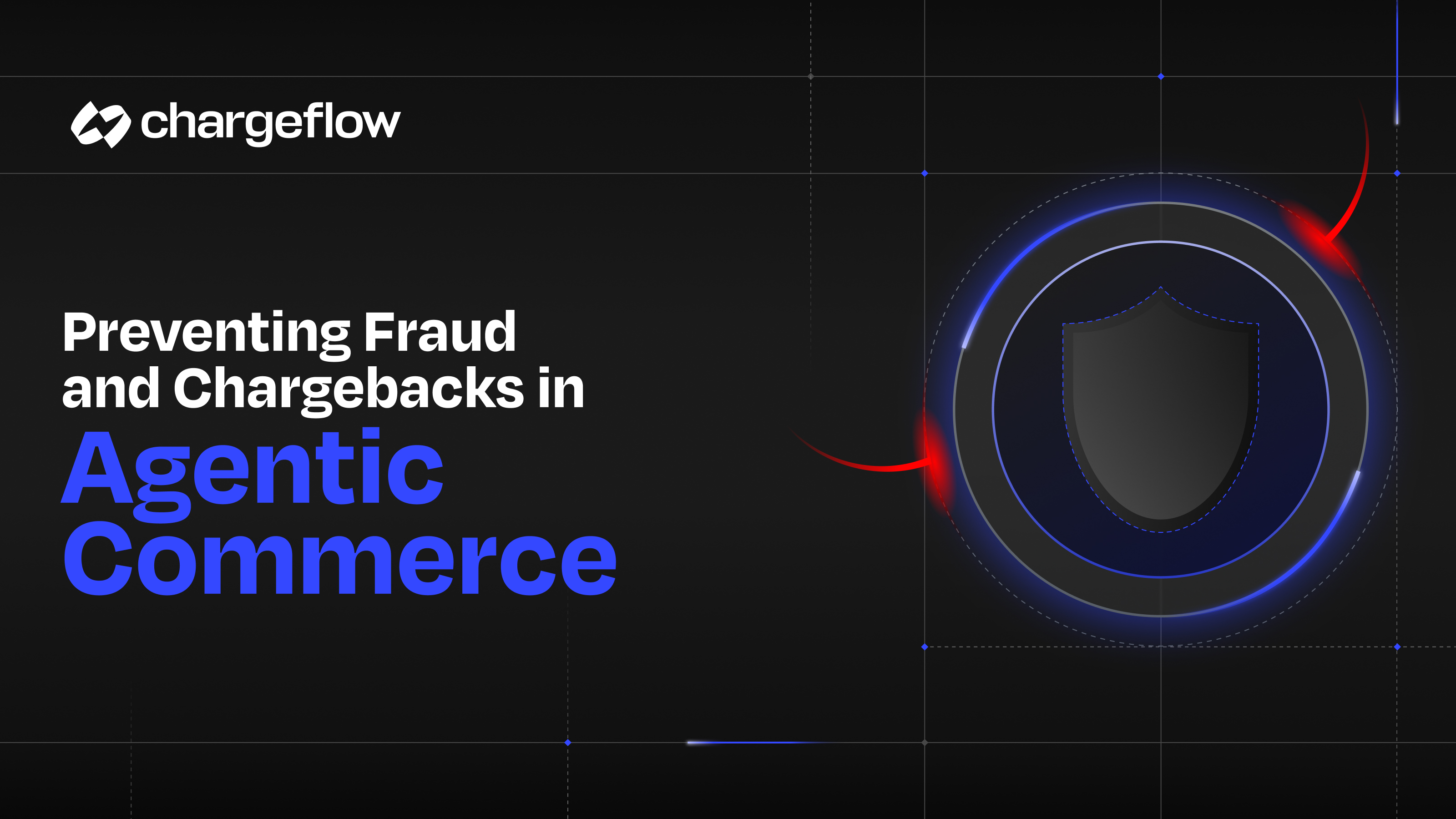How To Prevent Chargebacks? 2023 Guide

Chargebacks?
No longer your problem.
Recover 4x more chargebacks and prevent up to 90% of incoming ones, powered by AI and a global network of 15,000 merchants.
A chargeback is a forceful payment reversal by the bank. Cardholders go over merchants’ heads to reclaim their money from their bank with a chargeback.
A chargeback is a forceful payment reversal by the bank.
Banks and credit card companies apply chargebacks when a cardholder disputes a transaction with them.
The chargeback mechanism empowers the bank or card issuer to deduct the disputed charge from the merchant’s account and remit it back to the cardholder. Although that provides consumers with needed air cover, chargebacks present a significant threat to merchants’ sustainability and livelihood.
Today’s post will shed more light on the following:
- What is the chargeback process?
- What threats do chargebacks pose for your eCommerce?
- When should you fight a chargeback?
Let’s dig in!
What is the chargeback process?
Before we answer that question, it’s crucial that you understand the purpose of chargebacks and how cardholders have now weaponized chargebacks to commit friendly fraud.
Chargebacks serve as a consumer protection instrument. In that sense, chargebacks were designed to improve cardholder confidence in making card payments.
Merchants know that the probability of a forced payment reversal is high and put in the effort to improve their processes.
Next to that, chargebacks put a check on merchants to ensure optimum product and service delivery. It makes vendors transparent and accountable to their customers.
Another equally vital purpose of chargebacks is to help cardholders seek remediation when fraud incidents occur. For example, if a business created a backdoor for data brokers to access their website and profile visitors, and such practice leads to a data breach and incidental unauthorized transaction, the cardholder can quickly file a chargeback and recover their money.
Now, it’s vital to reiterate that unlike in traditional payment refunds, cardholders go over merchants’ heads and reclaim their money from the card issuer with a chargeback. And for that reason, dubious cardholders have now weaponized chargebacks to commit friendly fraud.

What is friendly fraud?
Friendly fraud, also known as chargeback fraud, is when a cardholder intentionally steals from the merchant. The consumer makes a card transaction and then files a chargeback with their bank after receiving the purchased goods or services. The chargeback nullifies the transaction cost, the cardholder receives a full refund of their money, and the merchant bears the brunt.
There are several reasons why the chargeback process is prone to such manipulation, chief among those being that the spike in technological innovation and payment options has far outpaced policy development in the industry.
Now, even well-meaning consumers can file a chargeback out of convenience. For example, a recent survey found that consumers have filed chargebacks for several invalid reasons, including:
- To make an extra buck or get something for nothing.
- Buyer’s remorse.
- For preventing a resupply or order handling fee.
- To avoid returning purchases.
- Forgotten purchase or unrecognized bill.
- Impatience with order delivery timelines.
- Overdue order return schedule.
- To avoid paying for a transaction by a family member.
Although such actions might seem like a fun sport to consumers, chargeback management consumes between 13% and 20% of a merchant’s operational budget, Javelin's study indicates. Hence, merchants need to understand how chargebacks work and best practices for their mitigation.
The chargeback process is complex and overwhelming
The chargeback cycle is daunting...even for well-experienced merchants. But not to worry, we’ll unravel all the intricacies here and help you get the hang of things quite nicely.
Here’s how it works:
- The consumer files a chargeback with their bank.
- The bank/card issuer reviews the case and assigns a chargeback reason code, indicating why the cardholder seeks a payment reversal. Every reason code has unique remediation protocols such as response filing time limits, required documentation for representment, etc.
- The bank investigates the case. Ideally, the bank ought to do their due diligence at this point to ensure the customer’s claim is substantial and the chargeback warranted. If all things check out on their end, they’ll grant the chargeback by deducting the funds from the merchant’s account and remitting them to the cardholder. They’ll then send a notification of the deduction to the merchant’s bank.
- The merchant reviews the chargeback. At this point, the merchant decides whether or not the deduction has merit. If they conclude the chargeback is meritless, they’ll have to provide sufficient evidence to counter the payment reversal and reclaim the funds.
- When the merchant proceeds to fight the chargeback, this fifth step comes into play: Their carrier will receive compelling evidence and evaluate it against the case. If the evidence is clear enough, the acquirer will go ahead and dispute the chargeback to the bank. The merchant acquirer re-presents the chargeback.
- The bank reviews the documentation and reaches a final decision. They’ll bill the transaction to the consumer if the merchant presents substantial compelling evidence and remit the original transaction fund back to the merchant. However, all fees and ancillary costs of the chargeback mediation stay spent.
From available records, merchants have less than a 20% success chance in the end. That's why many vendors see chargeback as a cost of doing business - which is false, as you’ll soon discover.

What threats do chargebacks pose for your eCommerce?
As we intimated in the previous section, the impact of chargebacks to your eCommerce far-outweigh the loss of revenue. Chargebacks often lead to the death of a business is not managed efficiently.
The chargeback construct is consumer-focused, and every chargeback attracts non-negotiable fees. For example, suppose a cardholder filed a chargeback because they didn’t recognize a bill and eventually figured out they made the transaction, and goes on to cancel the chargeback. The merchant will still pay a non-refundable chargeback fee and associated admin charges.
Besides the fees that each case attract, merchants could lose their accounts (and even their business) due to excessive chargebacks, as we covered in this piece.
When should you fight a chargeback?
In chargeback mitigation, the first rule of thumb is that you MUST fight all meritless chargeback.
Fighting chargebacks help you regain profits that you will ordinarily have lost. It's also a way to send needed warning to online shoplifters to stay clear of your business.
Use the following checklist to decide when you should fight a chargeback.
- You now your chargeback key performance indicator. Evaluate your chargeback representment win rate – which is the measure of your effectiveness at fighting fraudulent chargebacks. If your chargeback Win Rate is under 25%, it makes no sense to re-present. But if your chargebacks Win Rate is above that percentage, ensure that your Return on Investment (ROI) index is over 50%. Otherwise, you'll end up wasting your precious time and money fighting the chargeback. Again, if your win rate is above 30% but below 50%, you could proceed to fight the chargeback with some caution. The ideal point to aim at is anywhere from a 50% chargeback Win Rate and above.
- You know the chargeback reason code. For each claim, you must craft your representment to suit the reason code under which the bank filed the chargeback. The process is often troublesome; reason codes usually do not show the actual reason code. The major card networks have unique reason code systems, and banks use separate tools for placing a reason code. In the end, you might have issues with wrongly-applied reason codes. And fraudsters easily exploit vendors because of this limitation.
- The chargeback is winnable. If the chargeback has merit, that is, there’s actual fraud, or you made a mistake, it doesn’t make any sense to fight it. You can contact the cardholder and find a solution that works. Get more hacks from here.
That said, instead of the "trial and error" of manual chargeback mitigation processes, you can prevent chargeback fraud more effectively with chargeback automation.
Surely, you can follow the standard best practices – offer timely and helpful customer service, ensure your products and services are worth the cash, make your privacy and return policy easy to find – but you a more advanced step to mitigate chargeback and friendly fraud is with chargeback automation.
And Chargeflow fully automated chargeback guarantee gives you absolute convenience to quickly stop fraudulent chargebacks, recover 2x more revenue, and enhance your business sustainability. All that and more while gaining access to mountains of data to improve key performance indicators of your business. Learn more.

Chargebacks?
No longer your problem.
Recover 4x more chargebacks and prevent up to 90% of incoming ones, powered by AI and a global network of 15,000 merchants.






























.png)








